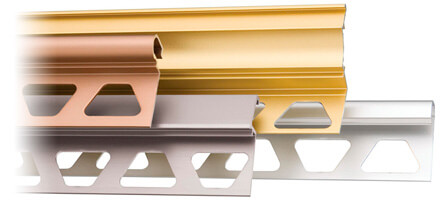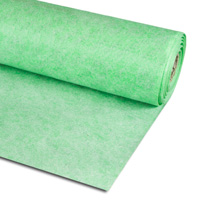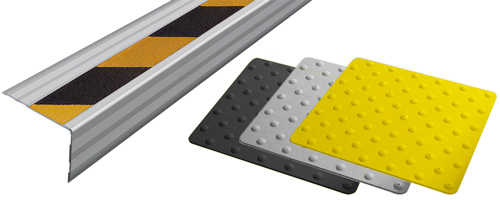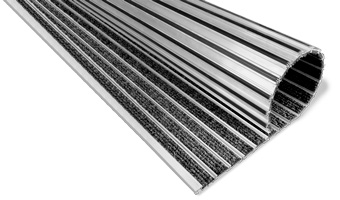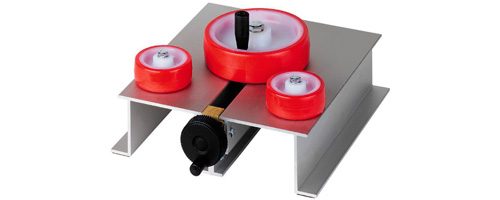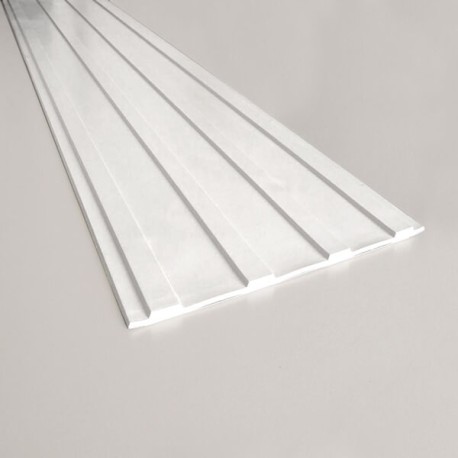Profile or self-adhesive podotactile strip made of extra-flat polyurethane 7 mm high with grooves in low relief. Designed as a warning solution to identify areas with obstacles. To create podotactile ground. For indoor placement.
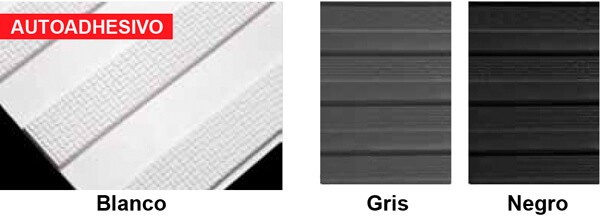
Measurements
- Width: 228 mm
- Length: 970 mm
- Height: 7 mm

Self-adhesive podotactiles made of polyurethane have been designed to create warning podotactil to identify areas with obstacles, or areas where there is a change in height or opening without protection, such as stairs and open platforms. Being made of stainless steel, it makes them ideal for indoor and outdoor environments, and due to its non-slip and padotactile texture, they are easily identifiable by users. The placement template adjusts the size and arrangement of the installation holes.
Applications
Podotactile buttons designed for placement, according to a pattern, as a warning element against the risk posed by the edges of platforms, pedestrian crossings, beginning and end of stairs, among others, especially for the blind and visually impaired.
Placed at the beginning and end of stairs, they serve as a signaling element by means of tactile contrast thanks to the projection of a few millimeters.
These anodized aluminum podotactile buttons are indicated for external placement.
Materials
Made of polyurethane with excellent properties. It is a very common material that is used in everyday utensils, tools, household appliances, housing structures, etc. It is also widely used in less domestic areas such as infrastructure construction, the automobile or maritime industry, among others.
Installation
For its placement, just remove the protective layer from the adhesive and place it on the final surface. In the case of marble, stone or ceramic stairs, a good pre-cleaning must be carried out to ensure the adhesive adhesion.
Cleaning and maintenance
Polyurethane podotactile profiles do not require excessive maintenance. It will be enough to use water and detergent or a specific neutral cleaner in solution.
The use of abrasive or pickling products is not recommended, as well as strong acids (hydrochloric and perchloric), strong bases (caustic soda or ammonia) or carbonated solutions.

